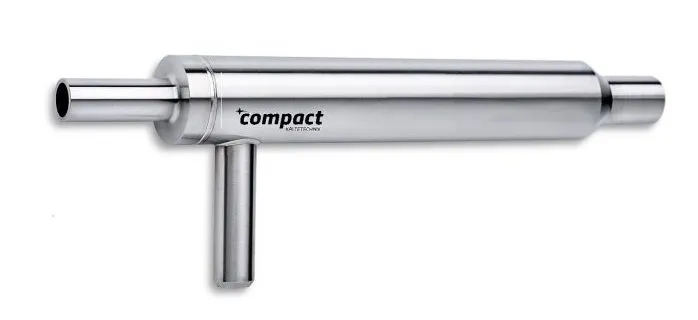*c-Ejektor is used to increase efficiency in CO 2 boosters.
Components
The CO2 ejector
Ejectors are used to increase efficiency in CO2 booster systems.
The ejector
*c-Ejector is used to increase efficiency in CO2 booster systems. In conjunction with a high-pressure valve, three different types of gas injectors and two types of liquid ejectors can be combined as required.

Principle mode of action of an ejector
The *c-Ejector utilizes
Contents
Jobs





